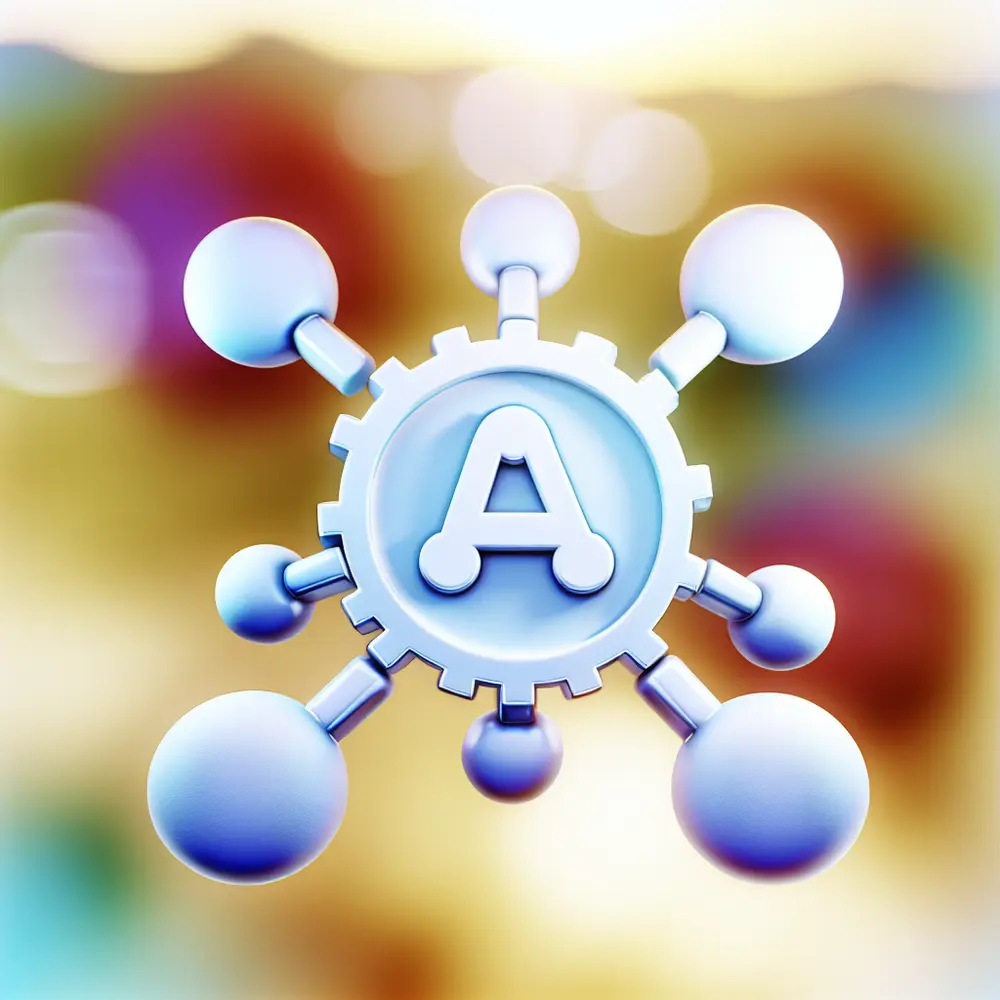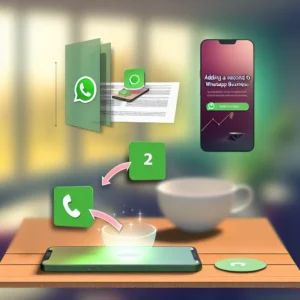In the fast-paced digital age, understanding technology concepts is paramount. For many beginners, Application Programming Interfaces (APIs) appear complicated. Yet, grasping their significance equips you to navigate an interconnected world effectively. APIs bridge software applications, streamlining communication and enhancing user experiences.
As businesses leverage technological advancements, APIs have emerged as key enablers of innovation. Recognizing how they function can shape your perception of modern digital interactions. With examples like the WhatsApp API, you can see their practical applications transforming customer engagement.
In this article, you will explore the fundamentals of APIs, their components, and real-world applications, particularly focusing on the WhatsApp API. Understanding these concepts will empower you to embrace technological integration in your projects and daily life.
Understanding the Basics: What is an API?
An API, or Application Programming Interface, acts as a bridge that allows different software applications to communicate with each other. In simple terms, you define rules and protocols for how one software component interacts with another. Understanding the API definition is essential for you, especially as a beginner.
Imagine a restaurant where you, as a customer, place an order through a waiter. The waiter is the API, taking your request and communicating with the kitchen, which prepares your meal. This approach simplifies interactions, ensuring that communication remains clear and efficient. Similarly, APIs enable various programs to send and receive data seamlessly.
APIs can be categorized into different types, such as web APIs that facilitate online interactions. For instance, the “ChatConnect” Company integrated the WhatsApp API into its customer service platform, resulting in a 30% increase in customer engagement and a 25% faster response time. This example showcases how APIs function in the real world.
Technical explanations often delve into how APIs use HTTP requests to fetch data or perform actions. When you call an API, you typically send a request with specific parameters, and the API responds with relevant data. This interaction underpins many online services, making it critical for beginners to familiarize themselves with API definitions.
As businesses seek to optimize operations, understanding APIs becomes invaluable. The example of “ChatConnect” illustrates this trend, highlighting how embracing technologies can lead to improved customer experiences through efficient digital communication.
Breaking Down the API Definition: Key Components Explained
The API definition serves as a crucial bridge between different software applications, enabling communication. An API provides a set of rules and protocols for building and interacting with software. By understanding its purpose, you demystify complex technical concepts.
APIs act as contracts between a service provider and a client. When your application sends a request to an API, it is essentially asking for specific data or functionality. The API processes this request and returns the appropriate response, usually over the internet.
Endpoints are one key component in API definitions. These are specific URLs representing various features or resources within an API. The “FoodDelivery” app, for example, features endpoints for placing orders, tracking deliveries, and managing user accounts. Effective utilization of these endpoints enhances your productivity as a developer.
Another vital aspect of APIs is authentication. Secure methods verify user or application identities, ensuring that only authorized parties access or modify data. “FoodDelivery” saw a 15% improvement in data security after implementing OAuth authentication for its API.
The data format used in API communication is also important. JSON (JavaScript Object Notation) and XML (eXtensible Markup Language) are common formats. JSON is often preferred for its simplicity, making it a popular choice among beginners exploring API definitions.
Intelligent APIs vs. Traditional APIs: A Comparative Analysis
Intelligent APIs use machine learning and natural language processing to enhance functionality, whereas traditional APIs typically rely on straightforward data exchange. For instance, the “SmartAssist” Company leveraged intelligent APIs to automate customer interactions, resulting in a 40% increase in customer satisfaction scores.
Why APIs Matter: The Role of APIs in Modern Technology
APIs play a crucial role in modern technology by facilitating communication between different software applications. They enable systems to interact and share data seamlessly, which is vital for beginners to understand.
An API is a set of rules that allows one software application to access features or data from another. This is especially pertinent in today’s interconnected world where platforms utilize APIs to enhance user experiences. When you use a mobile app for messaging through WhatsApp, the WhatsApp API enables that interaction between the app and WhatsApp’s core systems.
APIs enhance functionality without necessitating a complete overhaul of existing systems. This means you can tap into powerful services—like payment processing, notifications, or social media access—without developing those complex systems from scratch. The “RetailPlus” e-commerce platform successfully integrated the PayPal API, leading to a 35% increase in online sales.
Furthermore, APIs are essential for integrating third-party services. Businesses leverage APIs to incorporate external solutions, maximizing operational efficiency. The WhatsApp API allows businesses like “RetailPlus” to integrate messaging capabilities, greatly facilitating customer communication.
APIs also play a vital role in real-time data exchange. They enable instant data retrieval and manipulation, essential for applications relying on current information. Without APIs, synchronous communication between applications would be challenging.
Exploring the WhatsApp API: Connecting Users and Businesses
The WhatsApp API bridges businesses and users, enabling effective communication on one of the most popular messaging platforms. This API allows companies to integrate directly with WhatsApp, ensuring customers receive timely information and support.
For beginners, understanding the WhatsApp API may seem daunting. However, its user-friendly design helps businesses send notifications, respond to queries, and manage orders through automated messaging. This significantly improves customer engagement with instant replies, essential in today’s fast-paced environment.
By utilizing the WhatsApp API, businesses can create personalized experiences for their audience, boosting brand loyalty. For example, “FashionTrends” leveraged the WhatsApp API to send personalized order updates to customers, resulting in a 20% increase in repeat purchases.
The WhatsApp API operates using secure HTTP requests, ensuring messages exchanged between businesses and users remain encrypted. Familiarity with API definitions helps you understand how software components interact, making the WhatsApp API an effective tool for integration.
Adopting the WhatsApp API allows organizations to automate processes, reducing customer service team workloads. Chatbots can handle repetitive inquiries, freeing agents to tackle more complex issues. After implementing the WhatsApp API, “FashionTrends” reduced their average response time by 50%.
Real-Life Examples of APIs: How They Power Everyday Applications
APIs are the unsung heroes behind many applications we use daily. They enable different software systems to communicate, streamlining tasks and enhancing user experiences. Understanding how APIs function reveals their vital role in technology.
The WhatsApp API enables businesses to seamlessly interact with customers, allowing companies to send notifications, respond to inquiries, and provide support, thus improving service efficiency. This example illustrates how advanced technology enhances everyday communication.
Another relatable example is the integration of Google Maps into various applications. Many travel and ride-sharing apps utilize the Google Maps API to display routes, pinpoint locations, and calculate distances. This integration simplifies navigation for users while allowing developers to leverage extensive mapping data without creating their mapping system.
Social media platforms heavily rely on APIs as well. For instance, Twitter’s API allows developers to access tweets and user profiles, facilitating the creation of apps that analyze social media trends. This functionality demonstrates how APIs enable third-party applications to enhance existing platforms.
In e-commerce, payment processing APIs, like those offered by PayPal or Stripe, simplify transactions while handling sensitive information securely. These APIs allow businesses to process payments without exposing their infrastructure to threats, highlighting the dual benefits of enhanced functionality and security.
Getting Started with APIs: Tips for Beginners to Explore Further
Understanding API definitions is crucial for beginners venturing into tech. An API allows different software applications to communicate and share data seamlessly. While technical jargon can be intimidating, grasping the basics unlocks numerous possibilities.
A great starting point is exploring the WhatsApp API, which enables businesses to automate and enhance customer communication. By integrating this API, companies can send notifications, handle inquiries, and provide support more efficiently, driving customer engagement.
Experimenting with open-source APIs is an effective way to familiarize yourself with API functionalities. Many platforms offer free access, allowing you to practice and learn through building simple applications—an invaluable hands-on approach.
Documentation serves as a critical resource for beginners. Most APIs provide comprehensive guides for integration and utilization. By reading documentation, you can learn essential concepts and usage patterns that enhance your API knowledge.
Engaging with online communities and forums can accelerate your learning. Platforms like GitHub, Stack Overflow, and dedicated API forums connect you with knowledgeable professionals and fellow learners. Sharing experiences, asking questions, and participating in discussions deepen your understanding of API functionalities.
Embracing the World of APIs
The concept of API definitions can be simple yet powerful. An API acts as a bridge between different software applications, enhancing communication. By understanding APIs, you expand your technical knowledge and open doors to countless opportunities in the tech landscape.
Diving into APIs may seem daunting initially. However, grasping the basics provides a robust foundation for further exploration. APIs enable functionalities across various platforms— from mobile apps to your frequent websites. They allow features like social sharing, real-time updates, and integration with services like the WhatsApp API.
Using an API can significantly streamline processes. The WhatsApp API empowers businesses to interact with customers effectively, offering functionalities such as automated messaging and notifications. This engagement improves customer experience while optimizing operational efficiency. Thus, embracing APIs leads to innovative solutions, even for non-technical individuals.
Understanding different API types—such as REST, SOAP, and GraphQL—can guide your exploration of which API fits your needs best. Each has unique characteristics and intended use cases, inviting deeper engagement as you gain confidence.
APIs play a key role in today’s digital ecosystem. By leveraging them, both individuals and businesses create integrated online experiences that enhance productivity and service delivery. As you explore APIs, official resources like the WhatsApp API documentation can inspire new ideas and applications.
In conclusion, while the technical landscape may seem complex, the fundamental API definition is accessible. Start by experimenting with various APIs, building hands-on experience, and expanding your knowledge progressively. Embrace this exciting domain to discover endless opportunities for innovation and connection. Learn more about the WhatsApp API here.









